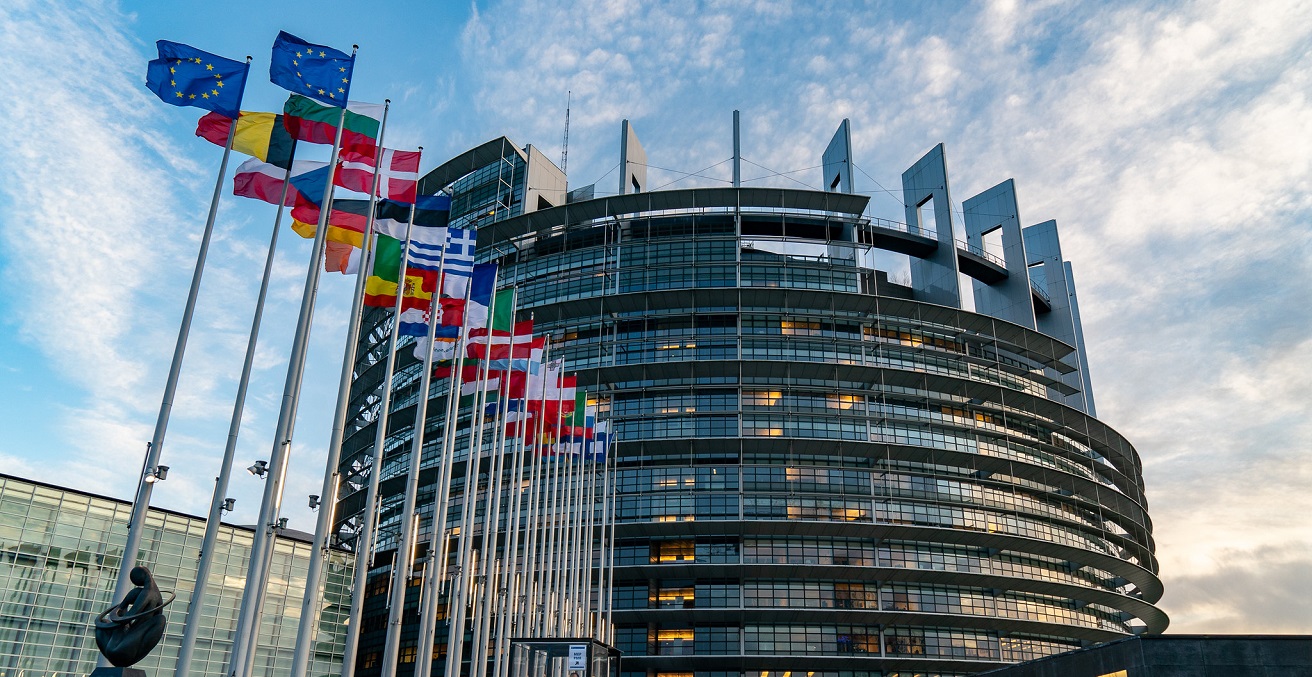Could the Coronavirus Strengthen Rather Than Threaten Geopolitical Europe?

The challenges of economic recovery have exposed the need for solidarity in Europe. The pandemic provides a remarkable opportunity for boosting European integration internally and for implementing a new external geopolitical vision.
As a response to COVID-19’s socio-economic impacts, the European Commission (EC) unveiled the EU’s biggest fiscal stimulus in its history on 27 May, which is yet to be approved by the member states. While COVID-19 has led to various kinds of “social distancing” between the member states, could the pandemic lead to more rather than less Europe in the post-COVID-19 times?
A new comeback: the recovery package
The most recent gloomy forecasts for Europe have indicated that coronavirus could be more destructive for the EU than Brexit, migration, and bailout crises. The most pessimistic outlook raised fears that the EU could even collapse under the weight of the significant socioeconomic impacts of the pandemic. Past experience has shown that Europe has the ability not only to overcome crises but also to promote the European agenda. Following the 2008 Global Financial Crisis, arrangements were created leading to a new banking union and effective Eurozone bailouts. With the introduction of the European Semester, the seeds of the fiscal union were also sown. While the coronavirus crisis has placed member states on the frontline, in post-COVID-19 times, the power will shift back to EU institutions.
To enable the member states to overcome the economic downturn of the coronavirus crisis, the EC is proposing a recovery package of €750 billion (€500 billion of non-refundable grants and €250 billion of loans). This is a revolution in all but perhaps its name, as the package implies a new vision of fiscal solidarity that has, until now, been controversial. So far, the EU budget has been dependent on the financial contributions of the member states (value-added tax, direct contributions, etc.). Now the EC wishes to borrow the €750 billion on the international markets by issuing bonds, which will have a maximum 30-year maturity. Unlike many member states, the EC’s AAA credit rating should secure low borrowing costs. Moreover, this borrowing capacity will have a rebound effect: financial institutions would be encouraged to lend at a lower interest rates to indebted member states, such as Italy and Spain, whose credit ratings have further deteriorated due to the pandemic (Italy’s credit rating is now BBB-minus).
Solidarity as pretext for internal reforms
The new package is much needed for the economic recovery of the member states. So far, the national fiscal stimulus (€420 billion, or 3 percent of the EU’s GDP) has been insufficient to shore up the national economies, particularly in the most indebted and the most coronavirus-affected states (Italy and Spain). In addition, to help the member states, the EC has relaxed the EU’s too-rigorous fiscal and state aid rules.
The recovery must be collective, or there might be no recovery at all. The EU budget is to serve as a collateral for the new €750 billion recovery debt issued by the EC, enabling an increase of the EU’s spending power and the raising new revenue to service the debt. At the same time, the package poses a new opportunity for the EC as the new revenue enables the implementation of internal reforms envisaged in the EU’s Green Deal. Recovery money would provide much needed funding for a variety of programs, including “the green and digital transitions,” supporting member states’ reforms (Recovery and Resilience Facility, Just Transition Mechanism), private investment (InvestEU), and new health preparedness (EU4Health).
However, there are several stumbling blocks. Although the European Parliament has enthusiastically welcomed the fiscal increase, there is the unanimity requirement among the 27 member states that decide the budget. The Multiannual Financial Framework 2014-2020 (€908.40 billion in payments over the course of its six-year duration) has been set at a ceiling for expenditure of 1 percent of European Gross National Income (GNI). The borrowing of €750 billion should boost the EU budget to a ceiling for expenditure of 2 percent of GNI. As a result, the EC presented a revised proposal for the EU’s 2021-2027 budget amounting to €1.1 trillion. Key economic players (Germany, France, and Italy) are adamantly supporting the EC’s approach, while “frugal four” states (Netherlands, Austria, Denmark, and Sweden) are reluctant to hand out money through grants (2/3 of the rescue package). A Belgian solution could loom large as the reluctant states want to keep their rebates and could be satisfied with loans instead of grants. Further, Eastern European states might oppose Italy and Spain receiving the biggest share of the handouts. Whether the coronavirus package will favour loans instead of grants, and in what proportions these grants are to be distributed, remains to be seen.
Additionally, the EU’s new debt guaranteed by the EC will have to be paid back. The EC proposes to introduce new EU taxes, including “green” duties on carbon emissions or plastics, or a digital tax as an avenue for paying off the debt. These tax arrangements require unanimity, and several states are reluctant to levy new taxes. In case no EU consensus is achieved, member states would have to levy the tax themselves (France already does this with a digital tax) and streamline the revenues to the EU budget.
More money to support geopolitical Europe
Apart from providing the revenue for internal reforms, the EU’s green-digital recovery model provides much-needed financial support for the EU’s geopolitical appetites and presents an opportunity for paradigmatic shift in the global economy towards sustainable development.
Earlier this year, the EC presented its new vision of geopolitical Europe, which recognised that developments in a number of internal policy areas could have significant geopolitical consequences for the EU if not addressed. The EU lags behind in research and technological development including robotics and artificial intelligence, risking becoming dependent on the US or China. At the same time, some of its more advanced policies, such as climate change, cyber security, and protection of privacy, pose pressures for EU companies competing abroad. With respect to these policy areas, multilateralism can achieve more efficient results.
Geopolitical action requires linking relevant internal policies into a coherent and strategic external EU action. The lack of real money has always been the EC’s biggest problem. The new recovery arrangement enables the EC to streamline the internal reforms with the achievement of Europe’s geopolitical goals. The vision of the EU as the geopolitical power implies investment (financial power) and rules (EU regulatory standards in trade deals) rather than military means (albeit it retains external military funding through the Peace Facility).
The new budgetary approach envisages increased funding for the External Action Guarantee, the EU’s implementing tool for promoting investments, and economic stability in Africa and the EU Neighbourhood, which now also extends to the Western Balkans. With an additional €10.5 billion in funds, its capacity to cover the risk of loans to governments, administrations, and businesses in partner countries should be increased from previous €60 billion to €130 billion. The EU’s vision aligns with the UN’s recovery vision of linking investments to the sustainable development goals. In the post-pandemic world, with heightened divisions between the US and China, the EU will continue building coalitions with “like-minded” partners (such as Australia) in protecting the “rules-based” global order and promoting the EU green-digital vision. New EU’s financial capacities only buttress these efforts.
A game changer?
The new EC’s uncanny recovery package is a stroke of genius, which could likely lead to the “New Generation EU” not only in its name. Internally, it brings important fiscal changes to how the EU works. The EU long-term budget will be nearly doubled, in spite of former national reluctance. It is still far from a genuine debt mutualisation since the guarantor of the recovery debt will be the EC, not the individual member states. However, within the framework of this enhanced fiscal Union, the powers of the EC will be significantly increased as the EU’s executive would supervise and condition both loans and grants.
These increased EC’s powers will allow its push for the internal member states’ reforms that will prioritise the new EC’s model (Green and Digital) over traditional development trends. The available funds should facilitate the transition toward a digital (high-speed internet), a decarbonised (2050 climate neutrality), and circular economy, reckoning upon sustainable transport (electric vehicles fleet), healthy communities (EU health programme), and sustainable agriculture (25 percent organic agriculture according to the new Biodiversity Strategy). Together, these internal reforms and more centralised power should enhance the EU’s internal unity, which would in turn further support the EU’s external geopolitical goals.
A fundamental overhaul of the EU – both internally and externally – is envisioned as a response to the COVID-19 crisis. Needless to say, the proposed reform will go through a teething period. The challenge is to convince the member states to embrace the lessons gleaned from the past crises (Eurozone, banking, migration, and Brexit) rather than engage in a trench warfare involving shrewd tactics.
Ivana Damjanovic is an assistant lecturer at the University of Canberra and a PhD candidate at the Australian National University.
Nicolas de Sadeleer is a professor of law and a Jean Monnet Chair at the University of Saint Louis, Brussels.
This article is published under a Creative Commons Licence and may be republished with attribution.





